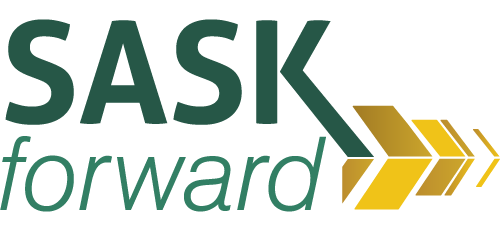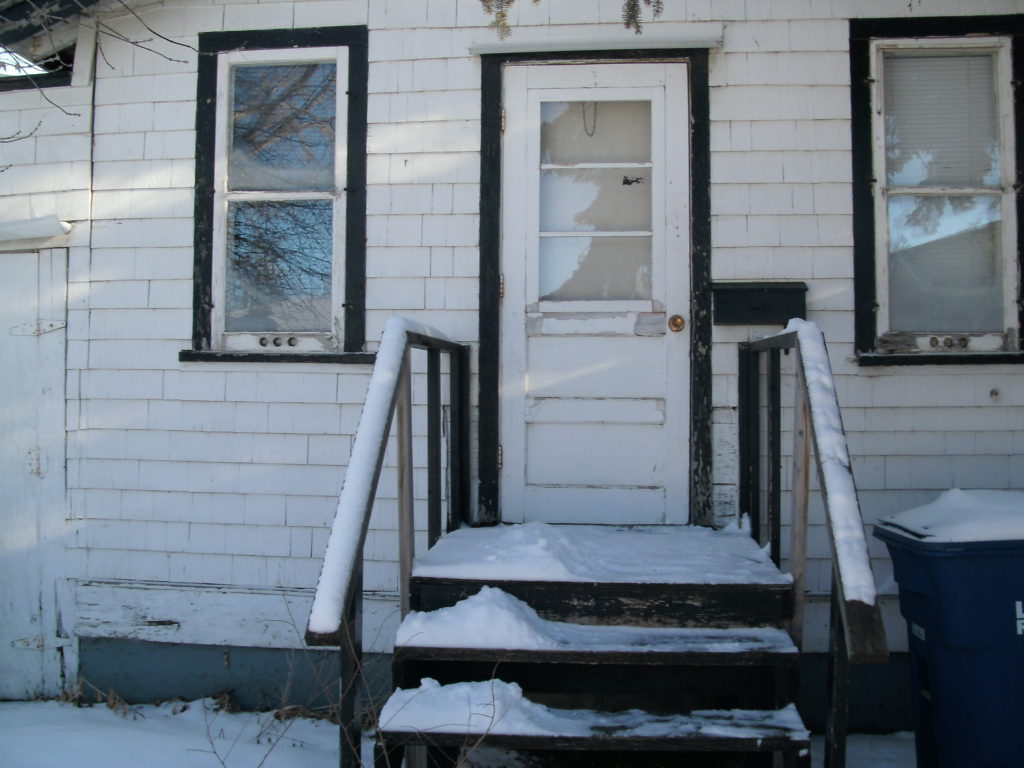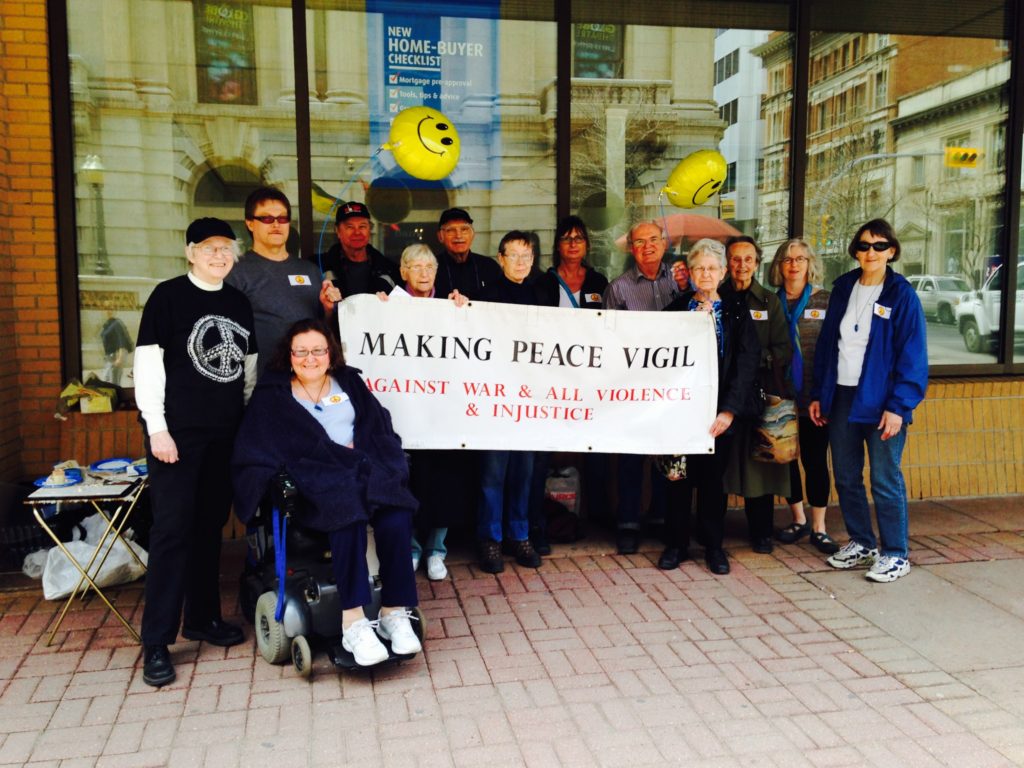By Peter Gilmer, Regina Anti-Poverty Ministry.
Introduction
The Regina Anti-Poverty Ministry (RAPM) is a social justice ministry of Wascana Presbytery of the United Church of Canada. Bonnie Morton and myself work for a board which is a cross-section of church members, representatives of community groups that deal with poverty issues and first voice volunteers. Our board has always had at least one third of its membership being low-income people.
RAPM does its work in three areas which are individual advocacy, public education and social justice. Individual advocacy involves providing support for low-income individuals and families to ensure that they are receiving those benefits that they are entitled to and that they are being treated fairly by the institutions that they are dealing with. Public education involves providing educational workshops and resources on poverty issues and social justice involves consulting and working with low-income people and community partners to develop and promote public policies that would move us toward the elimination of poverty in Saskatchewan.
In our individual advocacy casework, we have been handling over 2000 cases per year. While people contact our office for many different reasons, there is one common denominator. Virtually everyone who requests our individual advocacy services have incomes that are too low and costs for basic needs that are too high. Though it is not said often enough, it should be obvious that a major problem for low-income people is that their incomes are too low. The other side of the problem is rising costs for necessities.
We cannot eliminate or even combat poverty without a plan. That is why a comprehensive strategy is so important. At the same there are very specific ingredients to such a strategy that will be essential for its success.
Since 1997, RAPM has identified key anti-poverty proposals through extensive consultation with low-income people and community groups dealing with poverty issues. The following proposals arise time after time. They are adequate income security benefits, a living wage, quality and affordable housing and childcare, equity initiatives and fair taxation.
We have taken these proposals for debate through the courts of the United Church so that they have become the official positions of Saskatchewan Conference of the United Church of Canada. They are also positions that fall within the framework of human rights.
- Economic Rights
Poverty is a human rights violation. In 1976, Canada with the approval of all the provinces, signed the United Nations Covenant on Economic, Social and Cultural Rights. Article 11 of this covenant recognizes the right of everyone to an adequate standard of living for themselves and their family, including adequate food, clothing and housing and to the continuous improvement of living conditions. Article 7 of the covenant recognizes the right of everyone to the enjoyment of just and favorable conditions of work which ensure all workers with fair wages for a decent living for themselves and their families as well as equal remuneration for work of equal value.
This means that issues such as adequate income security benefits, a living wage, quality and affordable housing and childcare and pay equity are not just social policy concerns. These are basic human rights. Social and economic rights are human rights that the federal and provincial governments are obligated to uphold. The United Nations Committee on Economic, Social and Cultural Rights has been very critical of Canada and the provinces for not ensuring these rights in such a wealthy nation.
Saskatchewan needs to entrench these rights in enforceable legislation. We also need an agency with legislative teeth to monitor compliance.
- Adequate Income Security Benefits
When we allow social assistance rates to be set too low we are legislating poverty. Saskatchewan went 24 years without a significant increase to social assistance rates. Between 1981 and 2005 the basic allowance was never above $195 per month which works out to $6.50 per day for food, clothing, personal and household items as well as transportation. Between 2005 and 2007, with a strong push from our organization and others, there was a $60 increase to $255 per month. Unfortunately it remains at that rate today. The cost of living has risen drastically in the past eight years but the basic allowance has not. Saskatchewan Assistance Plan (SAP) rates must be raised to meet basic needs and then indexed to the cost of living.
More recently we have seen the introduction of the Saskatchewan Assured Income for Disability (SAID) Program for persons with significant and enduring disabilities. It is more dignified and less intrusive than SAP and now has benefit rates that are $350 per month higher. Despite these improvements, it still falls thousands of dollars per year below the poverty line. It should be set at a socially acceptable rate, similar to seniors benefits or approximately $1600 per month and then indexed to the cost of living.
As inadequate as SAP is, it is actually better than the Transitional Employment Allowance (TEA). TEA is the social assistance program for persons who are considered potentially employable and we have called for its elimination. TEA is based on SAP rates for adult and shelter allowances but is even less adequate because it has capped rates for utilities and no provision for special needs. It is also ironic that a program called the Transitional Employment Allowance claws back all earned income dollar for dollar.
Along with benefit levels that take actual cost of living indicators into consideration, we also believe that those on income security programs should be allowed to keep considerably more earned income and other income and assets before it is deducted from their benefits. Wage exemptions should at least be doubled and simplified with a flat rate. All exemptions and special needs benefits should also be indexed.
In recent years, there has been a resurgence of the idea of a basic income program. A basic income is an unconditional, adequate income to ensure a life with dignity and self-determination for everyone. It would provide a floor of economic security to which other forms of income could be added. A basic income would provide financial recognition and remuneration to those individuals who perform essential, socially valuable work that is unpaid, such as family caregivers and community volunteers. It is time we redefined productivity.
RAPM understands that such a program is not on the immediate horizon and wants to ensure that present income security measures are enhanced in the mean time. However, we do believe that Saskatchewan could move in a basic income direction. The implementation of a universal basic income supplement to provide greater adequacy of income would go a long way toward promoting the idea that a decent income should be a right of citizenship like medicare or public education.
Saskatchewan has a rich history of creating progressive and universal social programs which have become a model for the rest of Canada and a universal basic income supplement would allow us to build on that proud tradition.
- A Living Wage
A socially adequate or living wage is an essential component of any effective anti-poverty strategy. It is also a necessary protection for the lowest income workers. That is why the United Nations Covenant on Economic, Social, and Cultural Rights recognizes the right to remuneration, which provides workers with fair wages to provide a decent living for themselves and their families.
With a minimum wage of $10.72 per hour, Saskatchewan is once again near the lowest minimum wage in Canada. Since 2007, Regina food and housing costs increased by 45% while the minimum wage increased by only 28%. Therefore, many minimum wage earners are worse off than they were eight years ago.
According to the Saskatchewan Branch of the Canadian Centre for Policy Alternatives, a living wage for a Regina family with two working parents and two children was $16.46 in 2012. At present approximately 25,000 people work at the minimum wage in Saskatchewan. Many more people work in low-wage employment as 23% of Regina households earned less than the CCPA living wage in 2011. Minimum wage increases provide a positive ripple effect of higher wages for low-wage earners as employers attempt to maintain a structure of wage differentials among categories of employees.
Almost two-thirds of minimum wage earners are women. A living wage would help reduce the wage gap between men and women.
Members of other equity seeking groups are also more likely to work at or just above the minimum wage. Raising the minimum wage creates greater equity between groups in our society.
There is no empirical evidence that minimum wage increases reduce employment. However, some research indicates that employment actually expands when the minimum wage is increased. Princeton economists David Card and Allan B. Kruegar came to this conclusion when they studied the impact of a large minimum wage increase on fast-food restaurant employment. In New Jersey, a minimum wage of 19% was followed by an increase in minimum wage employment. In neighbouring Pennsylvania, which did not follow suit, minimum wage employment lagged behind. Card and Krueger concluded that New Jersey’s increase in in the minimum wage increased employment in that state. There is good reason for this. Low-income people spend all their money in the local economy. Boosting their incomes boosts economic activity to create jobs.
In 1975, Saskatchewan’s minimum wage was the equivalent of 119% of the poverty line. If it had been indexed at that point it would be over $12 per hour now.
Throughout the 1970’s and early 1980’s, the Saskatchewan government maintained a minimum wage that was the highest or among the highest in Canada. Between 1971 and 1982, Saskatchewan’s minimum wage was increased fourteen times, tripling it in the process.
As part of a comprehensive anti-poverty strategy we call on the Government of Saskatchewan to set the highest minimum wage in Canada with the long term goal of an actual living wage.
- Affordable Housing
The biggest growth in RAPM’s casework since 2006 has come in the areas of rental coverage, availability and conditions as the crisis of a lack of affordable housing for low-income people continues.
Between 2006 and 2010, average rent went up by 43% in Regina. The next three years saw an additional 20% increase. In 2010, the last year for which figures are available, over 3,400 people used Regina shelter beds. If the hidden homeless (those who are couch surfing, in overcrowded accommodations or living rough) are factored in it is estimated that this number would double.
Behind these statistics is tremendous human misery that we encounter every day. We must consider what is needed to make a truly comprehensive housing strategy that benefits all citizens. First of all, we need to ensure that we maintain the traditional Canada Mortgage and Housing Corporation definition of affordable housing as not exceeding 30% of household income. Housing cannot be considered affordable just because it is at or below average market rent. Skyrocketing rents in recent years have meant that average market rent is far beyond the means of the people we work with. There needs to be a priority given to social housing where rent is geared to income. There must be substantial additional public funding to facilitate the acquisition and creation of a large number of social housing units for low-income individuals and families. Facilitating this expansion should be a top priority for all levels of government.
Long before the rental availability and affordability crisis, Saskatchewan faced the problem of having many sub-standard, ill-maintained rental properties. The present rental market has meant that low-income tenants are now in an extremely vulnerable position when it comes to addressing rental conditions because their options are so limited. There is a need for rental unit licensing and/or a rental unit inspection program to ensure explicit quality standards for all rental properties.
RAPM continues its call for rent control legislation on low and mid-range accommodations. At present the only regulations involve how frequently rents can be increased. What is needed is control on how much rents can be increased in a given year. At present, 80% of Canadians live in jurisdictions with rent controls but we do not. Rental increases have caused tremendous hardship for many low-income people and tenants need protection.
RAPM has always pushed for enhanced shelter allowances and rental supplements and will continue to do so. However, there are many other basic needs that income security benefits should be meeting rather than largely ending up in the hands of landlords. Rent controls combined with social housing would lead us in the direction of being better able to ensure all basic needs could be met. Surely a reasonable accommodation can be reached between property owners, tenants and the province regarding limits on rental increases. Generally those with wealth and power can defend their own interests but governments have a vital responsibility to protect those who cannot.
- Quality Childcare
Quality and affordable childcare is an essential ingredient in the workplace participation of parents with young children–especially mothers. In Scandinavian countries a single mother and her children are no more likely to live in poverty than any other household due to family friendly policies with childcare as the centrepiece. In Saskatchewan, over 40% of female headed lone-parent families live in poverty.
Quality childcare is also an excellent way to provide better early childhood education that ensures that all children have an equal chance at good development.
We are still in need of a national childcare program. In the meantime there should be increased provincial funding for more regulated childcare spaces and enhanced childcare subsidies for families.
Unfortunately Saskatchewan continues to do very poorly on this front. At 7.6% Saskatchewan has the lowest percentage of children for whom there are regulated childcare spaces in Canada. The national average is 20.5% and Quebec has 37.4%. Indeed of the provincial/ territorial allocations to regulated childcare, Quebec accounted for 60% of the total. This has not only allowed them to have over 85,000 regulated spaces, it has allowed them to set an affordable parent portion for childcare costs.
In their study of a living wage for a typical family of four in Regina, the CCPA found that childcare was a close second to housing as the highest cost factor for such a family. We should move as quickly as possible toward Quebec’s model of affordable childcare. At the same time we should set the short term goal of doubling regulated childcare spaces with properly trained and justly paid staff.
- Equity Initiatives
There continue to be groups who disproportionately bear the brunt of poverty in Saskatchewan. That is why we must ensure greater economic equity for First Nations and Metis peoples, new Canadians, women, and persons with disabilities.
The socio-economic gap between Aboriginal and non-Aboriginal people continues to be the biggest gap of all in Saskatchewan. This gap must be closed given that Saskatchewan’s economic , political and cultural future will be largely shaped by todays First Nations and Metis children and youth.
According to figures released last year, the First Nations unemployment rate was roughly 15% compared to 4.4% for the province as a whole. More than 18,000 First Nations adults in the province remain on social assistance, the same level as five years ago. According to the 2011 National Household Survey, 29% of Aboriginal persons had low-incomes compared with 12.2% for non-Aboriginal people.
Obviously we need representative workplace and retention programs to break down systemic barriers including discrimination. We also have to consider revenue sharing with First Nations as an essential part of an anti-poverty strategy. First Nations people continue to suffer negative social and economic consequences because of colonial oppression. They have consistently asked for a share of the bountiful wealth of this province which is derived from the resources of the land. We therefore call upon the Government of Saskatchewan to enter into meaningful discussions on resource revenue sharing with First Nations.
Recent immigrants to the province, those who arrived since 2001, had a low-income rate of 24.3% in 2011. Persons with disabilities are also dealing with unacceptably high rates of unemployment. Along with Aboriginal people and women these groups need to be fully included in representative workplace strategies.
We also continue to call for pay equity legislation. The purpose of such legislation is to close the wage gap by ensuring female-dominated jobs are paid fairly in relation to male-dominated jobs. This legislation should be proactive as opposed to complaints based and it should be comprehensive, covering all classifications of employees. The legislation should be administered by a Pay Equity Commission and there should also be an independent tribunal created to deal with litigation under the legislation. Saskatchewan women deserve nothing less.
- Fair Taxation: Closing the Gap
There is no avoiding the fact that poverty elimination is impossible without a more equitable distribution of wealth and income. There are many social needs that can only be met by an increase in public revenues. Housing, childcare and income security programs have to be paid for if we are to ensure that peoples basic needs are met.
Saskatchewan has a high rate of income inequality. A 2009 study by the Saskatchewan Branch of the Canadian Centre for Policy Alternatives showed that Saskatchewan had the widest income gap between the richest and poorest 10% of families with children in Canada. It also showed that the richest 20% of Saskatchewan residents received 43% of all after tax income compared to 5% for the poorest 20%. This only shows a small part of the disparity as wealth inequality over time would be much greater.
According to the Canadian Association of Food Banks, Saskatchewan had the largest growth of food bank usage (26.6%) between March 2008 and March 2013 in Canada. This period also saw a significant growth of millionaires in the province.
There is a growing body of public health research that shows that beyond a minimal amount of wealth, the health and quality of life of a society depends less on its overall wealth than on how equitably its wealth is distributed.
In their book, “The Spirit Level: Why More Equal Societies Almost Always Do Better”, epidemiologists Richard Wilkenson and Kate Pickett show that those societies with less income inequality have higher life expectancy, lower infant mortality, better general health and mental health, fewer addictions, better literacy and education rates, less crime, less violence, higher status of women, higher levels of trust, greater amounts of international aid and greater environmental sustainability.
Perhaps what is most surprising about the findings is that it is not just low-income people that benefit but that every stratum of society including the richest are better off in more equal societies. In fact, the evidence suggests that every level of society is equally better off in relation to these and many other indicators as equality grows.
The research shows what many of us have morally or intuitively believed. Equality is good and growing economic inequality is very bad. The gaps between us tear the social fabric, breakdown community, are very costly and diminish us all.
At present, we only have three personal income tax brackets in Saskatchewan ranging from 11% to 15%. The top tax bracket kicks in around $120,000. This means that whether you made that much or are a millionaire you are in the same tax bracket. We believe that a progressive graduated tax system with at least another bracket would be more just and equitable.
When it comes to lost revenue an even bigger concern is low royalty rates on our non-renewable resources. Small changes in royalty rates shift millions of dollars to either public services and social programs or resource company profits. Given that these are non-renewable resources that should advance the common good of the people of Saskatchewan, we need to get the best return possible because when they are gone, they are gone forever. A better return could go a long way toward the enhancement of social programs and the elimination of poverty.
On the door on the Regina Anti-Poverty Ministry is a sign that states, “The existence of poverty is shameful. To be poor is not.” Poverty is not a choice. It is legislated. It is the result of public policy and economic inequality. But there is hope because there are policy alternatives and we have the wealth and resources to end poverty. We can have a more just, equitable and humane Saskatchewan. What is need is the public and political will to make that happen. Together lets make it happen. Let’s make poverty history!
Bibliography
Canadian Food Banks Association, Hungercount 2013, p. 7 and 28.
Canada Mortgage and Housing Corporation, Rental Market Report, Regina, October 2011 and October 2014.
Card, D. And Kruegar, A. (September 1994). Minimum Wage and Employment: A Case Study of the Fast Food Industry in New Jersey and Pennsylvania. The American Economic Review.
Ferns, C. And Friendly, M. (2014). The state of early childhood education and care in Canada 2012. Moving Childcare Forward Project (a joint initiative of the Childcare Resource Unit, Centre for Work, Families and Well-Being at the University of Guelph and the Department of Sociology at the University of Manitoba).
Gingrich, P. (September 2009). Boom and Bust: The Growing Income Gap in Saskatchewan, Saskatchewan Branch of the Canadian Centre for Policy Alternatives.
Gingrich, P., Enoch, S. & Banks, B. (2014). A Living Wage for Regina, The Saskatchewan Branch of the Canadian Centre for Policy Alternatives.
National Council of Welfare, Preschool Children: Promises to Keep (Spring 1998) Minister of Public Works and Government Services Canada, Ottawa.
Statistics Canada, CANSIM 282-0073 and 282-0074.
Statistics Canada, National Household Survey 2011.
United Nations Covenant on Economic, Social and Cultural Rights. Part III; articles 7 and 11
Warick, J. (April 13, 2015). Aboriginal employment stagnant economist says. The Star Phoenix as shown in the Regina Leader Post.
Wilkenson, R. And Pickett, K. (2009). The Spirit Level: Why more Equal Societies Almost Always Do Better. (London: Allen Lane).






